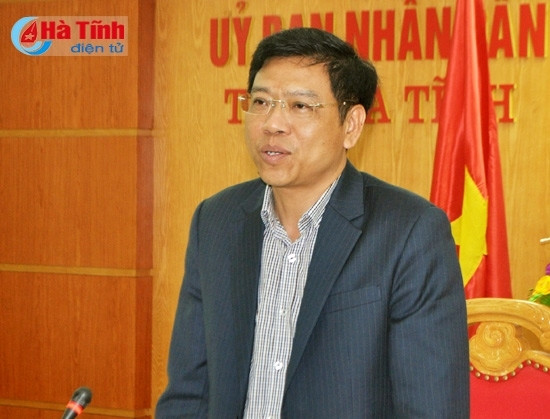 Director of the Ministry of Transport’s Marine Department Nguyen Xuan Sang (Photo: Ha Tinh online newspaper)
Director of the Ministry of Transport’s Marine Department Nguyen Xuan Sang (Photo: Ha Tinh online newspaper)Hanoi (VNA) – Nguyen Xuan Sang, Director of the Ministry of Transport’s Marine Department spoke with Thoi bao Kinh te Vietnam (Vietnam Economics Times) about the inland container depot system in Vietnam.
* Could you talk about the inland container depot system in Vietnam?
Inland Container Depots (ICDs) are dry ports equipped for handling and temporary storage of container cargo as well as empties. ICDs are formed to help importers and exporters handle their shipments near their place of location. If the sea port is away from the importers and exporters, ICDs help them save time and money.
ICDs were built in Vietnam decades ago, but only in the 1970s were they used as ICDs when the container port system developed. The system has developed strongly since 2003.
Figures from the ministry showed that there were 24 ICDs in the whole country, mainly in the north and south. There are ten ICDs in the north, which are connected with the sea ports of Hai Phong. However, most have no connection with other kinds of transport such as railways and waterways.
In the south, ten ICDs are connected with the sea ports of Vung Tau and HCM City, seven of which are linked with domestic waterways.
* A lack of connection between ICDs and waterways and railways seems to be the main failing of the system in our country. Why is this?
Many ICDs in the north are not connected with the sea, rivers or rail roads. Thus, the operation of these ICDs is restricted to supplying road transport services and storage.
In the south, ICDs are operating more effectively. Up to 80 percent of goods nationwide are transported via these depots. However, some ICDs are located inside the city, causing traffic jams. It’s necessary to remove these depots.
Most of the ICDs in the country have poorly constructed warehouses, which results in the inefficiency.
* How can we develop these ICDs?
We are examining planning to adjust and operate these ICDs more effectively. For instance, in the central region, some people suggest that ICDs be built in several locations, but these locations are only 30km from sea ports. I don’t think it’s appropriate since ICDs need to be located far from sea ports. Traffic jams caused by ICDs are another problem because the connection between roads and railroads has not improved.
To deal with these problems, Prime Minister Nguyen Xuan Phuc has allowed the Ministry of Transport to carry out adjustments in ICD planning.
In out recent survey in the southern area, the ministry’s inspection team found an inland waterway port in Binh Duong Province that could be developed into a large-scale ICD. This could be an important spot for gathering goods from the upper stream of the Saigon River, or for storing goods from Binh Duong, Dong Nai or Binh Phuoc provinces.
The ministry is also studying the possibility of developing clusters of ICDs in the north and in the central regions. Of course, there must be connection between these ICDs and waterways or railways.
* What do you think about the potential for ICDs in Vietnam? What can the Government do to attract investors for these ICDs?
I think the potential for ICDs is huge. According to the planning until 2020, the ICD system will be able to reach the capacity of 6 million TEU (twenty-foot equivalent units, a standard unit for describing a ship’s cargo capacity) each year. And by 2030, the figure would be 14.2 million TEU. This will be an opportunity for private investors to take part in the industry.
In terms of government management, we are willing to support and provide policies to attract private investment. It is scheduled that by August this year, the draft planning for Vietnam ICD system development until 2020, with a vision to 2030, will be completed.-VNA


























